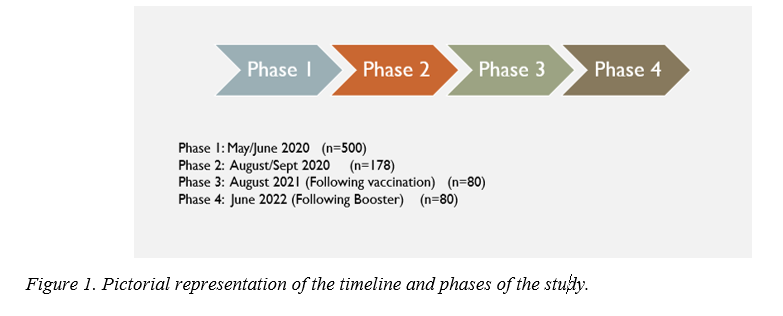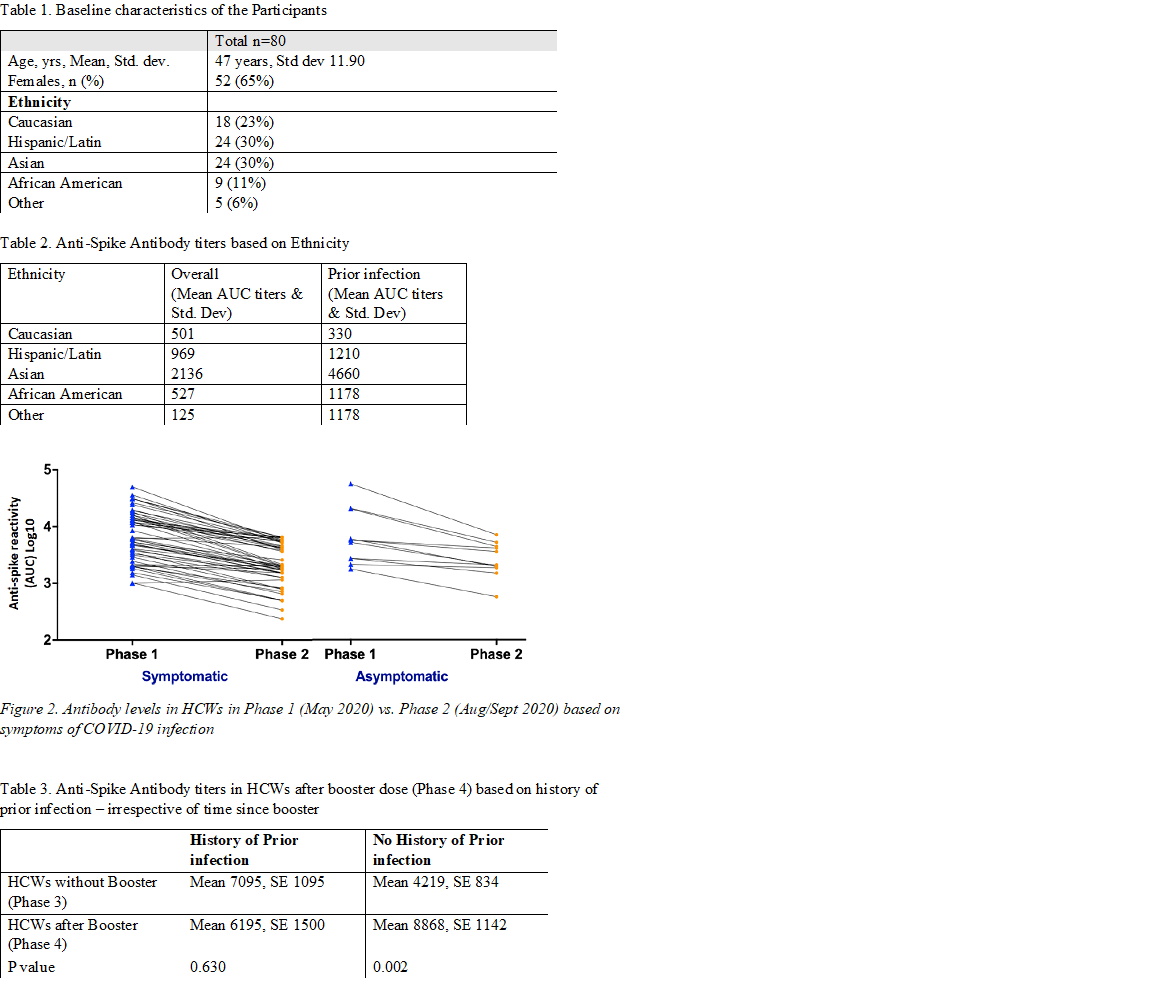Background: There is a significant gap in the knowledge of magnitude and durability of B cell response in the setting of prior SARS-CoV-2 infection and continued vaccination schedules including booster vaccination. Our study explores the magnitude and change in B cell response measured as anti-spike AUC (Area under the curve) among healthcare workers (HCWs) over a period of 2 years from the beginning of the pandemic.
Methods: A prospective study of the humoral response to SARS-CoV-2 Spike protein in response to natural infection and/or vaccination/booster among willing HCWs at our hospital between May 2020 and May/June 2022. The study has been conducted over 4 phases (Pre-vaccination:Phases 1&2; Postvaccination:Phase 3; Post-Booster:Phase 4). During each phase, participants completed an online survey regarding demographics, symptoms of prior infection and exposures. All participants had received Pfizer mRNA vaccine in Phases 3&4. Serum samples were collected at the above-mentioned time points, stored at -80°C and then processed using a quantitative enzyme-linked immunosorbent assay developed by the Mount Sinai Health System (MSH ELISA). Statistical analyses were performed using IBM SPSS Statistics,v.27.
Results: 80 HCWs who participated in all four phases were included in the final analysis. Majority were females(65%), Hispanic(30%), Asian(30%) with mean age 47years. On comparison of Phases 1&2(Pre-Vaccination),HCWs with prior COVID-19 infection(GroupA) had significantly higher anti-spike titers(M=7095,SE=1095) vs. those without (GroupB)(M=4219,SE=834),p=0.026. GroupA had a decrease in AUC titers between Phase 1(M=2053,SE=460)&Phase 2(M=1240,SE=322),p=0.15. Irrespective of prior infection status, AUC titers were significantly higher in the post-vaccination Phase 3(M=5734,SE=668) vs. pre-vaccination Phase 1(M=1375,SE=283)&Phase 2(M=961,SE=198),p< 0.001. Following vaccination,HCWs who had documented prior infections(M=7281,SE=1090) had significantly higher AUC titers compared to those without(M=4186, SE=771),p=0.030. There were no significant relationships between HCWs age/sex and AUC titers. However, Asians mounted a significantly higher response at baseline(p=0.04) with those having prior infection mounting a greater response(p=0.01); however, not so robust post vaccination.In Phases 3&4, there was statistically significant negative relationship between time from booster vaccination and AUC titers(p=0.022). Controlling for time from booster, AUC titers for HCWs with prior infection did not appear to increase with a booster dose between Phase 3(M=7095,SE=1095)&Phase 4(M=6195,SE=1500),p=0.63; in contrast, AUC titers for HCWs who did not have prior infection significantly increased after vaccination and booster between Phase 3(M=4219,SE=834)& Phase 4(M=8868,SE=1142),p=0.002.
Conclusions: We find that the magnitude of antibody response following infection and vaccination was higher. However, the response following booster was higher in patients without prior infection after controlling for time from booster. Surprisingly, HCWs with prior infection did not mount a significantly higher response following primary vaccination and booster compared to those without prior infection. Pre-existing memory cytotoxic T cells and antibodies that directly influence antigen availability could be responsible for reducing the magnitude of immune response in this population. Further studies are required for evaluation of the effect of periodic boosters.


